Related Research Articles
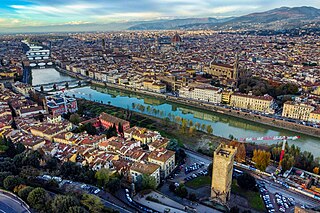
Florence is the capital city of the Italian region of Tuscany. It is also the most populated city in Tuscany, with 364,073 inhabitants in 2024, and 990,527 in its metropolitan area.
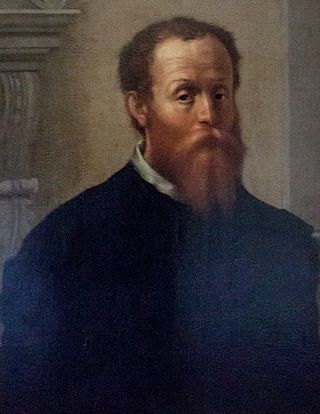
Baccio Bandinelli, was an Italian Renaissance sculptor, draughtsman, and painter.

The Palazzo Vecchio is the town hall of Florence, Italy. It overlooks the Piazza della Signoria, which holds a copy of Michelangelo's David statue, and the gallery of statues in the adjacent Loggia dei Lanzi.
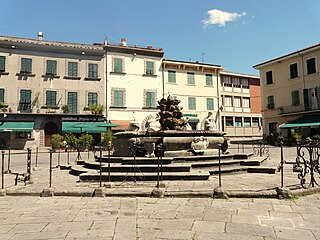
Fivizzano is a comune in the province of Massa and Carrara, Tuscany, central Italy.

Anghiari is a hill town and municipality (comune) in the Province of Arezzo, Tuscany, Italy.

The Battle of Anghiari (1505) is a painting by Leonardo da Vinci in the Salone dei Cinquecento in the Palazzo Vecchio, Florence. Its central scene would have depicted four men riding raging war horses engaged in a struggle for possession of a standard at the Battle of Anghiari in 1440.

John Thomas Spike is an American art historian, curator, and author, specializing in the Italian Renaissance and Baroque periods. He is also a contemporary art critic and past director of the Florence Biennale.

Maurizio Seracini is a self-proclaimed diagnostician of Italian art.

Pierino da Vinci, born Pier Francesco di Bartolomeo di Ser Piero da Vinci, was an Italian sculptor, born in the small town of Vinci in Tuscany; he was the nephew of Leonardo da Vinci.
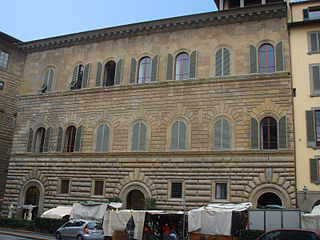
Palazzo Gondi is a palace in Florence, Italy, located a block from Piazza della Signoria. It was built in 1490 under design by Giuliano da Sangallo, who was inspired by other major works of stately buildings in the city, such as Palazzo Medici and Palazzo Strozzi. Among the elements borrowed from these earlier works are the cube-shape set around a central courtyard, the ashlar sloping on each of three floors, and the arched windows.
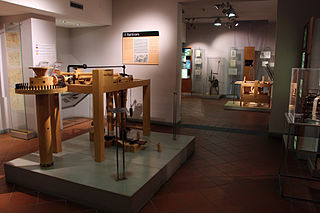
The Museo Ideale Leonardo da Vinci is located in Vinci, Leonardo da Vinci's birthplace, in the province of Florence, Italy. It is part of the Museo leonardiano di Vinci.
Miranda Kalefi is an Albanian painter. She attended the Academy of Fine Arts in Ravenna, Italy where she has resided since 1994. Kalefi has participated in a number of group exhibitions in Ravenna and has collaborated with the Art Gallery of "Albero Celeste" of S.Giminiamo in Siena.

The Metropolitan City of Florence is an administrative division called metropolitan city in the Tuscany region of Italy. Its capital is the city of Florence. It replaced the province of Florence. It was first created by the reform of local authorities and then established by the Law 56/2014. It has been operative since 1 January 2015.

Mauro Modin is an Italian painter. His work is tightly bound with and contaminated by music, in particular Jazz.
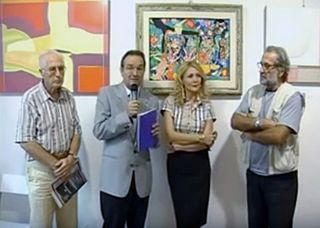
Mauro Marrucci was an Italian artist born in Volterra, Italy on December 18, 1937, by artisans parents and he died November 15, 2014, in Grosseto. Since 1950 he is acting as the Alabaster craftsman and wood and began his artistic research, released by academic schemes, as a graphic designer and painter and makes experiences in the field of sculpture. In 1861 he won first teaching assignment in Tuscany where he continues to practice as a graphic designer, painter and designer. Since 1973, public writings of artistic teaching and non-fiction. In December 1974 on Public Education of drawing the essay "The educational dialogue through the work of art." He also collaborates with the magazine School and cities. In 1982 he moved to Milan to teach Design and Art History at the XIII High School. In 1986 he held the chair of architecture at the Art School "Pietro Aldi" in Grosseto until retirement. From 1957 to 2011 he took part in demonstrations in graphics and painting in Italy and abroad, receiving reports from the most qualified critics and several awards.

Claudio Kevo Cavallini was an Italian sculptor. His nickname was "Kevo" with which he signed his works. At the age of 50, Claudio discovered that he could make sculptural forms from wood.
Ugo Capocchini was an Italian artist. He won many awards throughout his career, and became a Professor at the Accademia Di Belle Arti in Florence in the 1960s. In his birthplace, Barberino Val d'Elsa, a square and a community hall have been named after him.

Leonardo3 is an interactive museum and exhibition center at Galleria Vittorio Emanuele II, Piazza della Scala, Milano, Italy. The museum was inaugurated in 2013, and is devoted to Italy’s notable personality Leonardo da Vinci, who is portrayed both as an artist and inventor.
Roberto Montanari was an Italian painter. Known as “El Pintor de Los Toros,” he painted mostly Spanish bulls and landscapes and he was a pupil of Salvador Dalí. He held over 300 exhibitions. In 1970, 1971 and 1972 he exhibited with Pablo Picasso and Salvador Dalì.
References
- ↑ "Homepage". Premio Leonardo (in Italian). Retrieved 2020-01-04.
- ↑ "Tributes to artists". The Rotarian International Magazine. Vol. 133, no. 6. Rotary International. December 1978. p. 40.
- ↑ "Comune di Firenze - Le Notizie di Palazzo Vecchio". press.comune.fi.it. Retrieved 2020-01-07.
- ↑ "Leonardo Da Vinci". Dublin. Retrieved 2020-06-30.
- ↑ "Leonardo Da Vinci". Dublin. Retrieved 2020-07-03.
- ↑ "» Leonardo da Vinci Price Award" . Retrieved 2020-06-30.
- ↑ "History". Premio Leonardo (in Italian). Retrieved 2020-01-04.
- ↑ Bonner, Judith H.; Pennington, Estill Curtis (2013-01-14). The New Encyclopedia of Southern Culture: Volume 21: Art and Architecture. UNC Press Books. p. 365. ISBN 978-0-8078-6994-9.
- ↑ "Österreich Journal, Ausgabe Nr. 172 vom 04. Juni 2001". www.oe-journal.at. 2001-06-04. Retrieved 2020-01-05.
- ↑ "Main Post. Anlässlich der Verleihung des Premio Leonardo da Vinci". mainpost.de (in German). 2006-05-21. Retrieved 2020-01-05.
- ↑ "Journal TU Delft". Nibs | TU Delta (in Dutch). 4 June 2008. Retrieved 2020-01-08.
- ↑ "Austrian Academy of Sciences. Julius Brennecke receives the "Premio Leonardo da Vinci"". www.imba.oeaw.ac.at. Retrieved 2020-01-05.
- ↑ "Un prix pour ses travaux sur les fourmis". www.lanouvellerepublique.fr. 28 June 2012. Retrieved 2023-06-19.
- ↑ "Comune di Firenze - Le Notizie di Palazzo Vecchio". press.comune.fi.it. Retrieved 2020-01-05.
- ↑ "London Rotary Club to announce winner of prestigious Leonardo da Vinci prize". ResponseSource Press Release Wire. Retrieved 2020-01-05.
- ↑ "Stephan Busch receives Leonardo-da-Vinci award". www7.informatik.uni-wuerzburg.de (in German). Retrieved 2020-01-05.
- ↑ La Revista de Música. Codalario. "Premian al director de orquesta español Guillermo García Calvo por su trayectoria". www.codalario.com (in Spanish). Retrieved 2020-01-05.
- ↑ "Leonardo da Vinci Award 2018". Endplasticsoup. Retrieved 2020-01-05.
- ↑ "Leonardo da Vinci Award 2021 Vienna". 31 May 2021. Retrieved 2021-05-31.